Below is information about preparations for the Science Rendezvous (Bring a Fern Baby Home for Mother's Day) event (Markham: 2012--2014)
Fern Biology

The objective is to reveal the remarkable dynamics of the life cycle of a fern, using microscopy to view the swimming spermatozoids that fertilize the gametophyte and give rise to a fern parent.
Introduction
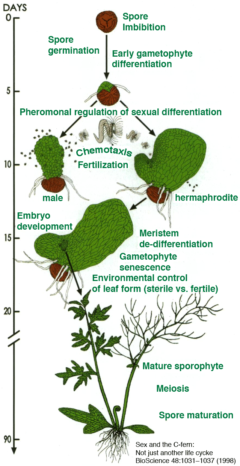 Ferns have two generations: the diploid sporophyte (what we usually identify as a fern) and haploid gametophytes. The
gametophytes are difficult to find because they are so small, growing on the surface of the soil beneath the parental
ferns. Two gametophytes must mate to produce the new diploid parental fern generation.
Ferns have two generations: the diploid sporophyte (what we usually identify as a fern) and haploid gametophytes. The
gametophytes are difficult to find because they are so small, growing on the surface of the soil beneath the parental
ferns. Two gametophytes must mate to produce the new diploid parental fern generation.
In the context of science education, the material can be presented at multiple levels. For children, being able to observe swimming cells under the microscope engages their natural curiosity. For older people, it provides an opportunity to introduce them to the complexities of biological life cycles.
Preparation
Preparing the material for Science Rendezvous requires access to techniques and equipment common to biology teaching labs at the University level. Using sterile technique, fern spores are germinated on agar plates containing a defined mix of salts, and at a well-controlled temperature and lighting. The details are available on the Web, at the C-Fern Project Website. The spores can also be germinated on moist soil in plant pots that are covered with plastic wrap to keep the humidity high. Once germinated, the size of the gametophytes is only about 1-2 mm, so magnifying lenses should be used to view them in greater detail.
 Once the spores have germinated, it takes about 10 days for them to reach maturity. The mature gametophytes in dishes
are brought to the Science Rendezvous event.
Once the spores have germinated, it takes about 10 days for them to reach maturity. The mature gametophytes in dishes
are brought to the Science Rendezvous event.
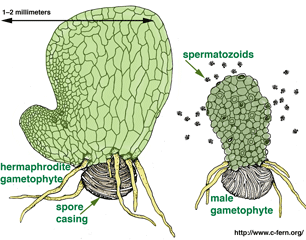 When water is added to the dishes, the spermatozoids are released (this may
take a few minutes or so) and swim to the female part of the hermaphrodite gametophytes and fertilize the female egg
cell. This can be seen by the participants using a dissecting microscope. Finally, the plates can be wrapped with
parafilm (or plastic wrap) to keep the newly-made fern babies moist and taken home.
When water is added to the dishes, the spermatozoids are released (this may
take a few minutes or so) and swim to the female part of the hermaphrodite gametophytes and fertilize the female egg
cell. This can be seen by the participants using a dissecting microscope. Finally, the plates can be wrapped with
parafilm (or plastic wrap) to keep the newly-made fern babies moist and taken home.
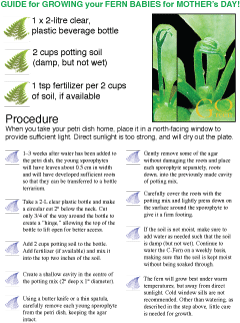 Click on the picture on the right for instructions on how to grow your Fern Babies once you take them home!
Click on the picture on the right for instructions on how to grow your Fern Babies once you take them home!
Fern Development
Once fertilized, it will take 3-4 months for the ferns to reach maturity. To begin with they are very small (about 5 mm).
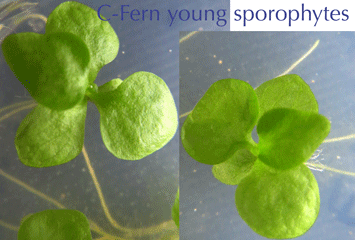
Over the first few weeks after transplanting them to soil, they develop more and more leaves.

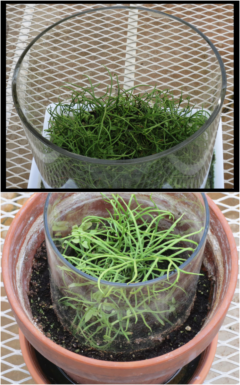 After 3-4 months, they reach maturity. We grow them in a hot greenhouse (about 28 degrees Celsius) at about 50%
full sunlight. They are fertilized weekly. We use glass cylinders to provide a higher humidity for the ferns as they
grow. The fern fronds have different shapes. The fertile (spore-bearing) fronds are thin and round (wiry). On their
undersides, the developing spores can be seen by unfurling the rolled edges of the leaf.
After 3-4 months, they reach maturity. We grow them in a hot greenhouse (about 28 degrees Celsius) at about 50%
full sunlight. They are fertilized weekly. We use glass cylinders to provide a higher humidity for the ferns as they
grow. The fern fronds have different shapes. The fertile (spore-bearing) fronds are thin and round (wiry). On their
undersides, the developing spores can be seen by unfurling the rolled edges of the leaf.
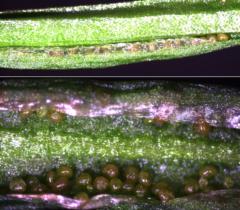
Chara Streaming and Pond Life Forms
The objective is to give the public an opportunity to view aquatic life forms that are common in Ontario ponds.
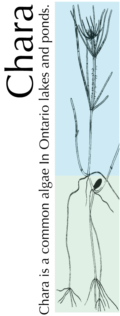
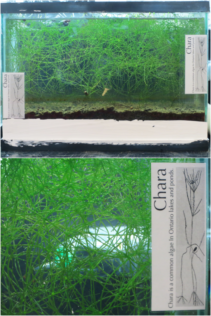 Small aquarium tanks of Chara (and assorted pond life in the tanks) were provided. The participants could obtain samples
from the aquaria to look at under the dissecting microscopes. The large cells of the Chara algae could be harvested with
forceps and a small pair of scissors. The dramatic cytoplasmic streaming can be readily viewed under a microscope.
Small aquarium tanks of Chara (and assorted pond life in the tanks) were provided. The participants could obtain samples
from the aquaria to look at under the dissecting microscopes. The large cells of the Chara algae could be harvested with
forceps and a small pair of scissors. The dramatic cytoplasmic streaming can be readily viewed under a microscope.
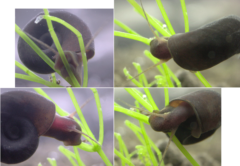 Snails are usually grown with Chara......... to keep the aquaria tanks clean!
Snails are usually grown with Chara......... to keep the aquaria tanks clean!
We routinely grow Chara for teaching labs at the University (in both Biology and Biophysics lab courses). Details on how to grow Chara are provided at the Biology Wiki.
Fern Development Images
The objective is to provide imaging of the developmental stages of fern development from the spore to the young sporophyte.
The plates were inoculated on Monday 25 August 2014 and placed in the Sanyo incubator set to 27.5 degrees Celsius with 80% illumination (a photon flux of about 65 micromoles per square meter per second of photosynthetically active radiation). Please feel free to use the photographs (click on the photos for the large version). The formal Creative Commons license is Attribution 4.0 International.
Day 4
After four days at 28 degrees Celsius, some of the spores are just beginning to germinate. First to emerge are rhizoids, which
anchor the spores in the substrate.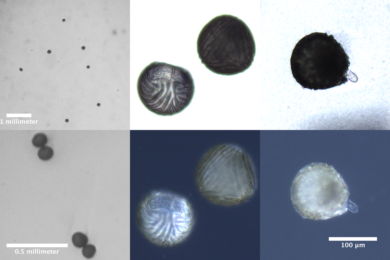
Day 7
After seven days at 28 degrees Celsius, most of the spores have germinated. The photosynthesizing 'leaf' is just emerging from some of the
spores.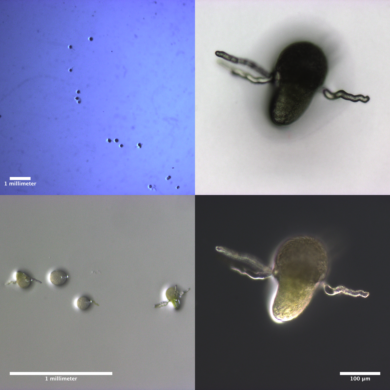
Day 9
After nine days at 28 degrees Celsius, the gametophytes continue to develop. At this stage, it is possible to distinguish
between male gametophytes (with a tongue or strap-shaped photosynthetic thallus) and hermaphrodite gametophytes (with a broad photosynthetic thallus).
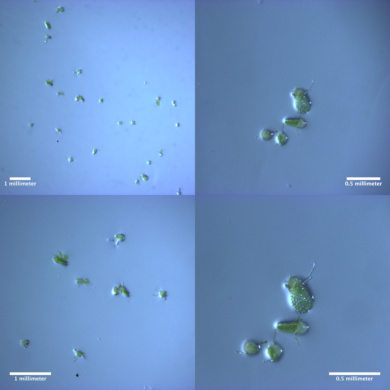
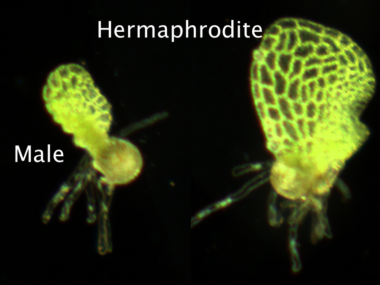
Day 10
After ten days at 28 degrees Celsius, the sex of the gametophytes becomes clearer. They are not yet mature, but should be in a few days
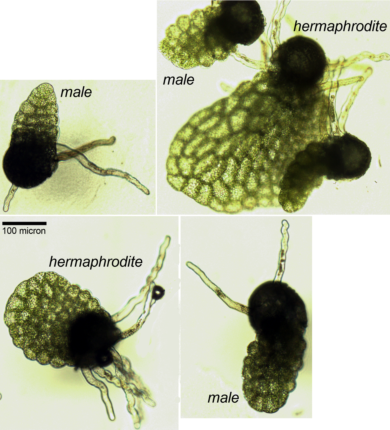
Day 11
After eleven days at 28 degrees Celsius, the gametophytes are nearing maturity. The hermaphrodite gametophytes (now mitten-shaped) are
beginning to develop the archegonium near the notch.
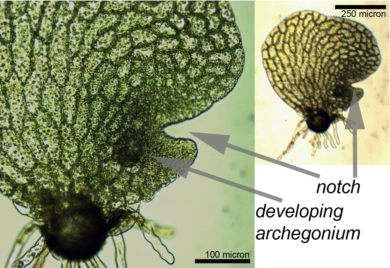
Day 14
After fourteen days at 28 degrees Celsius, the gametophytes have reached maturity, and are fully primed for fertilization.
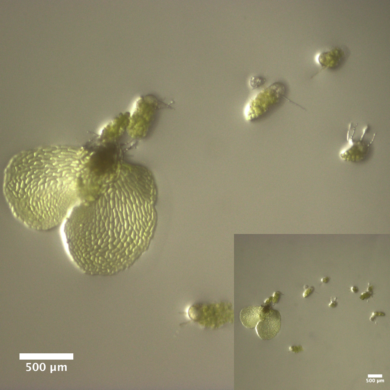
After adding distilled water, the spermatozoids are released and swarm near the archegonium of the hermaphrodite. The images were taken about
20 seconds apart, spermatozoid locations are marked in the lower panels.
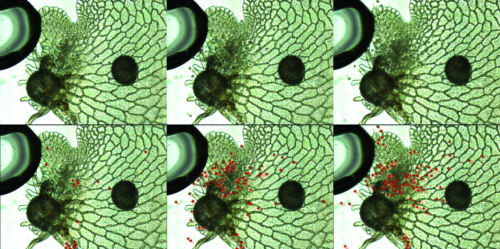
A high magnification movie [1.2 MB .mov format] of the swimming behaviour of the spermatozoids can be viewed by clicking on the photo below.
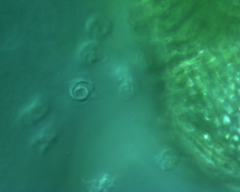
Day 17
Just a few days after fertilization, the new fern baby is visible as a bump at the notch of
the hermaphrodite.
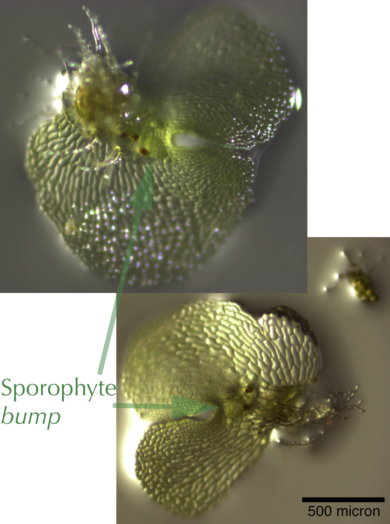
Day 21
After twenty-one days, the new fern babies are developing their first leaf. Note that the hermaphrodites are becoming
pale as they provide nutrition to the new fern babies.
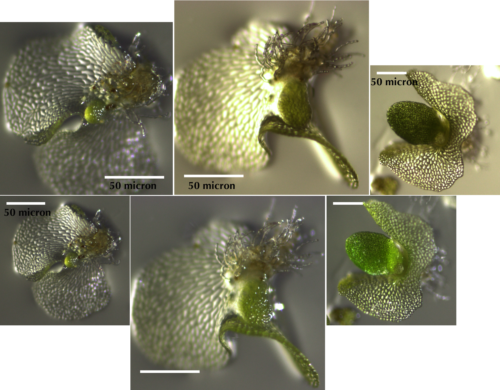
Day 25
After twenty-five days, the more mature fern babies are developing a root.
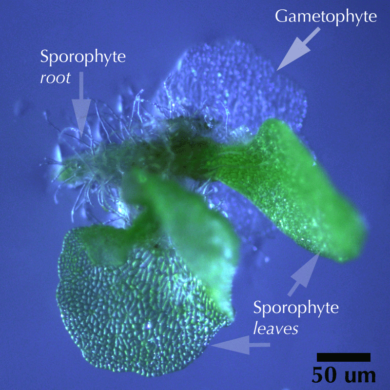
Day 28
After twenty-eight days, secondary leaves are starting to emerge. On older sporophytes, the developmental stages of the leaves --from initiation to expansion-- are apparent.
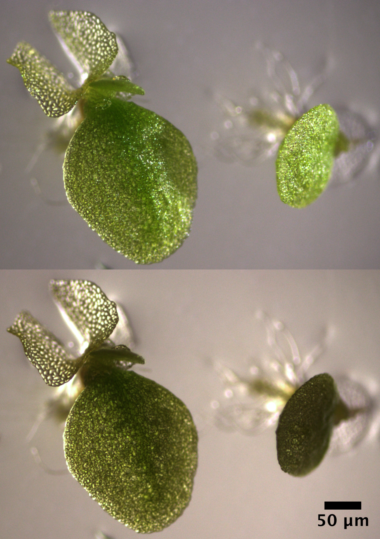
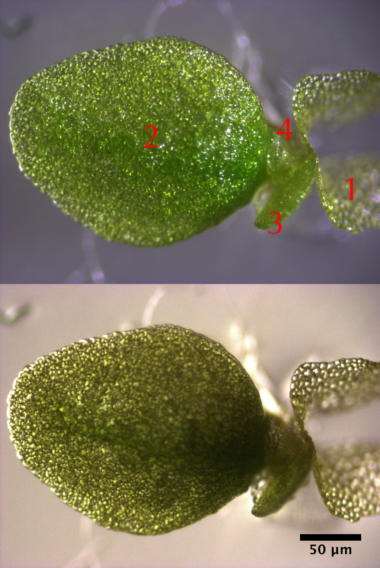
The young sporophytes are ready for transplanting to soil (with gentle care to minimize damage to the new fern babies!)
Day 30
High magnification images at day thirty show details of the leaf initials and emerging leaves.
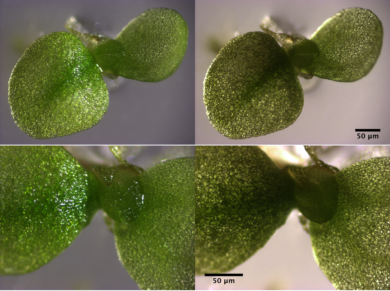
Day 49
Now in the greenhouse (in one of the hot zones, 24-28 degrees Celsius), the sporophytes continue to grow.
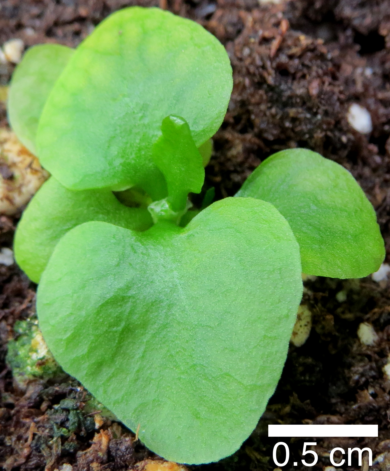
Day 57
The new baby ferns continue unfurl new leaves from the center of the plant.
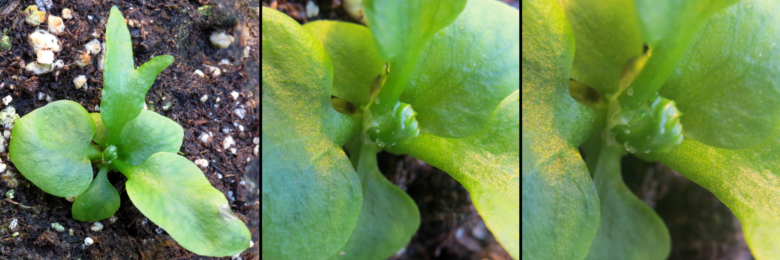
Day 183
A half year later, the ferns are very mature. The new spores can be found protected in the rolled edges of the underside of the fertile leaves. They are ready to be released to produce more Baby Ferns.
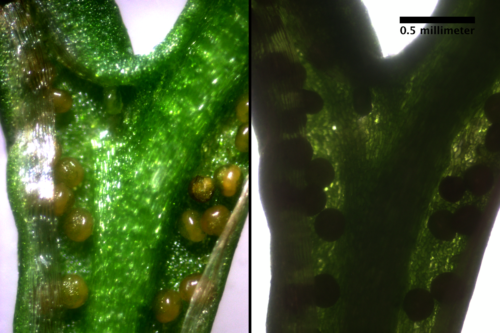
Here are temperatures and relative humidities [png] in the Incubator (and inside the Plexi-Boxes) from Day 4 to Day 7
